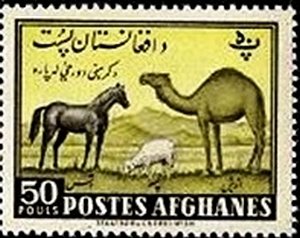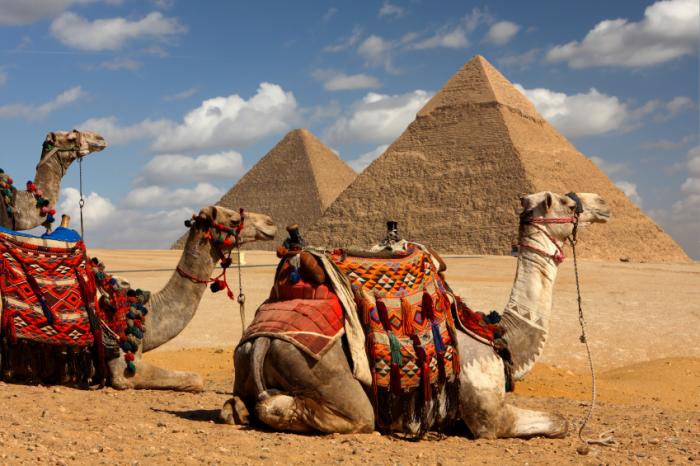Stamp: Horse (Equus ferus caballus), Dromedary (Camelus dromedarius (Afghanistan 1961)
Horse (Equus ferus caballus), Dromedary (Camelus dromedarius (Afghanistan 1961)
21 March (Afghanistan ) within release Agriculture Day goes into circulation Stamp Horse (Equus ferus caballus), Dromedary (Camelus dromedarius face value 50 Afghan pul
| Stamp Horse (Equus ferus caballus), Dromedary (Camelus dromedarius in catalogues | |
|---|---|
| Michel: | Mi:AF 526 |
| Stamp Number: | Sn:AF 492 |
Stamp is square format.
Also in the issue Agriculture Day:
- Stamp - Afghan Hound (Canis lupus familiaris) face value 10;
- Stamp - Grain and grasshopper face value 15;
- Stamp - Horse (Equus ferus caballus), Dromedary (Camelus dromedarius face value 25;
- Stamp - Horse (Equus ferus caballus), Dromedary (Camelus dromedarius face value 50;
- Stamp - Afghan Hound (Canis lupus familiaris) face value 100;
- Stamp - Grain, Grasshopper (Orthoptera) face value 150;
- Stamp - Chukar Partridge (Alectoris chukar) face value 175;
Stamp Horse (Equus ferus caballus), Dromedary (Camelus dromedarius it reflects the thematic directions:
The horse (Equus ferus caballus) is one of two extant subspecies of Equus ferus. It is an odd-toed ungulate mammal belonging to the taxonomic family Equidae. The horse has evolved over the past 45 to 55 million years from a small multi-toed creature, Eohippus, into the large, single-toed animal of today. Humans began to domesticate horses around 4000 BC, and their domestication is believed to have been widespread by 3000 BC. Horses in the subspecies caballus are domesticated, although some domesticated populations live in the wild as feral horses. These feral populations are not true wild horses, as this term is used to describe horses that have never been domesticated, such as the endangered Przewalski's horse, a separate subspecies, and the only remaining true wild horse. There is an extensive, specialized vocabulary used to describe equine-related concepts, covering everything from anatomy to life stages, size, colors, markings, breeds, locomotion, and behavior.
A camel (from Latin: camelus and Greek: κάμηλος (kamēlos) from Ancient Semitic: gāmāl) is an even-toed ungulate in the genus Camelus that bears distinctive fatty deposits known as "humps" on its back. Camels have long been domesticated and, as livestock, they provide food (camel milk and meat) and textiles (fiber and felt from camel hair). Camels are working animals especially suited to their desert habitat and are a vital means of transport for passengers and cargo. There are three surviving species of camel. The one-humped dromedary makes up 94% of the world's camel population, and the two-humped Bactrian camel makes up 6%. The wild Bactrian camel is a separate species and is now critically endangered.


